* (restored/expanded)
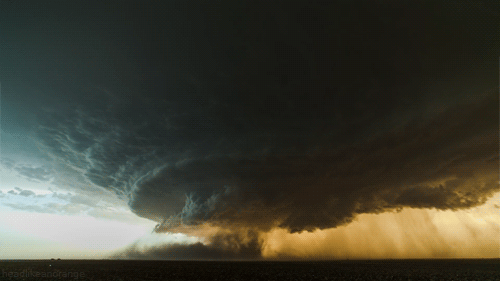
“Unlike almost all American directors, Jon Jost is not a traitor to the movies. He makes them move.” — Jean-Luc Godard
‘A figure like Jon Jost probably won’t come along again anytime soon. Whether this is a good or bad thing for independent cinema in the U.S. is, quite frankly, an open question. What would the Sundance and Weinstein universe do with someone who has so little use for money, authority or the polite bourgeois pieties that grease the contemporary film industry? Here’s a man who would rather walk away from the material trappings of success, so vitally important to so many, in order to make the work he wants to make. Jost works small, so that he can work true.
‘And yet he is no romantic Luddite. Everyone adapts. If you go to the website of Jon Jost, one of the most fiercely independent filmmakers the U.S. has ever produced, you will find statements on the virtue of digital imaging tools, along with information about renting or purchasing his films and videos from him directly. This includes recent works, made specifically in and for the DV medium, and Jost’s older films, which were shot and edited in either 16mm or 35mm film. While many artists quite understandably lament the inevitable loss of celluloid as a means of aesthetic communication, Jost isn’t looking back, except to get those early works out into the world.
‘Much of the so-called independent cinema of today wouldn’t really be possible without Jost, who spent the 1970s making poetic experimental narratives like Last Chants (for a Slow Dance), Bell Diamond and Slow Moves, usually for a couple thousand dollars apiece. These were films that excavated dominant mythologies, particularly the twin icons of rugged masculinity and the American West, while also finding the time to direct audience attention to the conditions of their making. Actors momentarily slip out of character; a sliver of documentary information disrupts the diegesis; Jost’s own voiceover discusses the filmmaking process, etc. Although none of these films ever made it big, Jost managed to get them seen by enough people around the world to make a name for himself. Prominent international critics considered him a rightful American heir to Jean-Luc Godard.’ — Nashville Scene
‘Jon Jost might be considered the epitome of the aging, alienated and aggrieved independent film director. He is sitting in a borrowed New York apartment in hand-me-down clothes, doesn’t have a place to live and has no visible means of support, other than a coming arts residency at the University of Nebraska.
‘“Most people from my generation became teachers long ago,” Mr. Jost said.
‘For the past four decades Mr. Jost, 63, has been making films on shoestring budgets with no-name casts that almost nobody outside of European film festivals ever sees. Perhaps the closest he has come to popular awareness was All the Vermeers in New York (1990). Since then he spent a decade in Europe toiling away in relative obscurity. From 1972 to 1976, he lived in Montana, where he scrounged from garbage cans and lived with a single mother and her daughter in one room with no heat or running water.
‘In 2004, he stayed in Newport, Ore., at the house of one of the actresses he cast in his most recent film, Homecoming, which he is still trying to find a festival home for domestically — forget about distribution. His income, such as it is, comes principally from selling DVD’s of his work on the Internet. He now lives in Lincoln, Neb.
‘“I can’t say I’m happy not making a living after 40 years in the business,” Mr. Jost said. “I’m not independently wealthy. I’m independently poor.”
‘Mr. Jost’s plight and perseverance constitute an extreme version of the mostly sideways career path followed by many of the generation of independent filmmakers who made a splash in the late 1980’s and early 90’s. When these directors, mostly now in their 40’s and 50’s, got started, the indie business was full of mom-and-pop operations with nickel-and-dime aspirations. Now the corner stores have been edged out by studio specialty divisions with far larger appetites and needs. Geoffrey Gilmore, the director of the Sundance Film Festival, said that in the early 90’s an independent film was considered a hit if it grossed $1 million. Now it’s $25 million.
‘“I’ve spent my life being left out,” Mr. Jost said. “I’d like to stop, but it’s what I do.”’ — John Clark, NYT
___
Stills



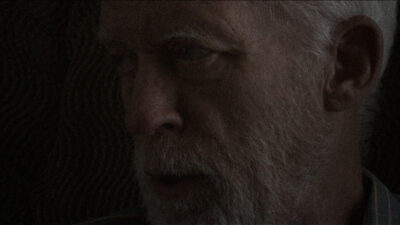



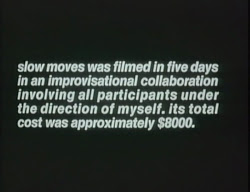



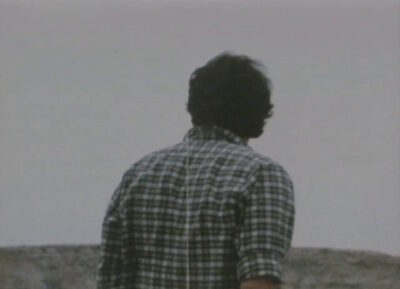
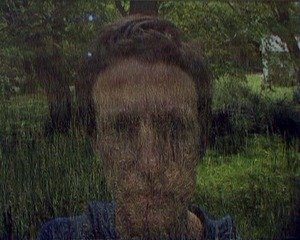
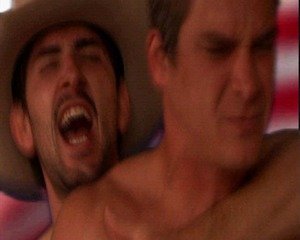








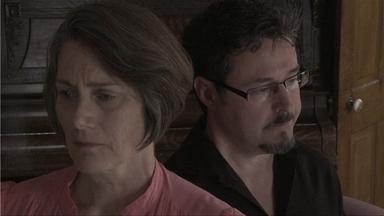


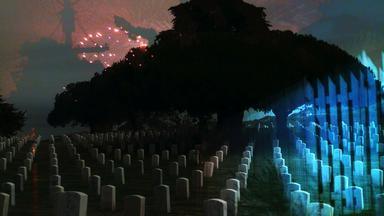




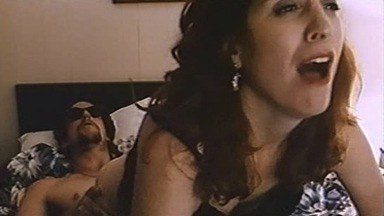
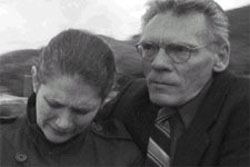




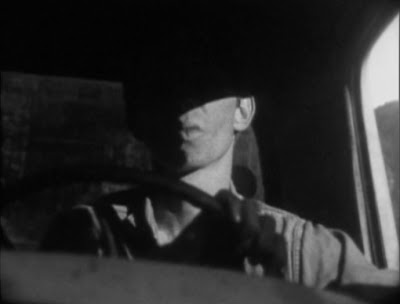
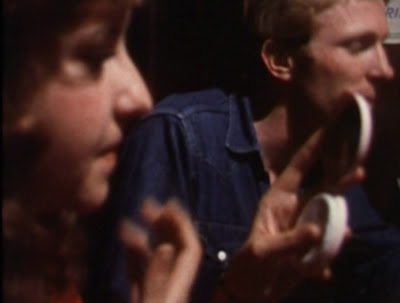





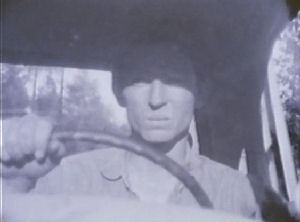















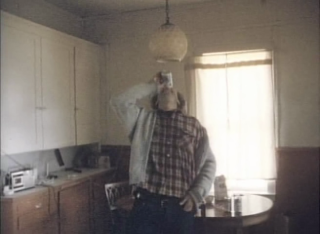

_____
Further
Jon Jost Official Website
Jon Jost @ IMDb
Jon Jost’s Weblog
‘6 Filmmaking Tips Directly From Indie Pioneer Jon Jost’
‘Jon Jost Retires (Sort Of)’
‘Coming to Terms: Diary of a film’
Jon Jost @ Twitter
‘The Big Circus’ by Jon Jost
Jon Jost’s films @ Strictly Film School
‘Notes from Practice’ by Jon Jost
‘PLAIN SONGS: ESSAYING AMERICA’
‘Except for a handful of movies Hollywood is fake’
‘Seventy years of Jon Jost’
‘Never let Mark Rappaport or Jon Jost leave their junk at your house’
‘A “Digital Art Revolution” Interview with Artist Jon Jost’
‘American film maker accuses Portugal’s press’
____
Extras
The Director Talks: Jon Jost
Jon Jost’s portrait by Gérard Courant (1982 – silent)
Digital Dancing with Jon Jost
Sequence from Jon Jost’s ‘Swimming in Nebraska’
Jon Jost interviewed in 2013
______
Interview
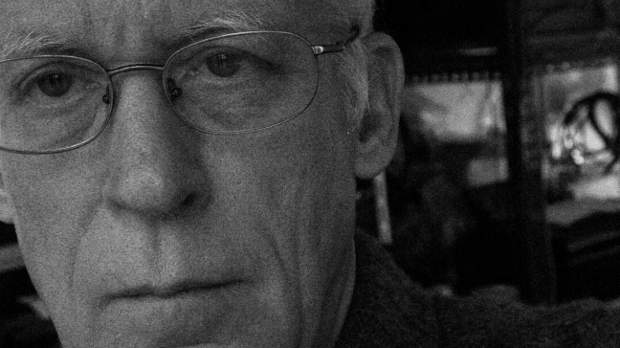
Your approach to narrative filmmaking is really interesting for its production method: having no real hard and fast script that actors have to follow, but also, using a lot of non-actors.
Jon Jost: Sometimes.
Oh, yeah?
JJ: Well, I’ve made tightly-scripted ones too.
Oh, I didn’t realize that. But you do use a lot of non-actors and usually that’s associated with a sort of documentary aesthetic. Did you ever perceive it as such?
JJ: I’m not certain what I perceived at the time I made them. For example, when I say I made tightly scripted films, most of my earlier films-the short films, not the very first short films, but the ones where I started working with sound-were tightly scripted essentially for economic reasons because the first take was always “the” take unless something horrible technical thing happened and made it unacceptable. A practice which I continued with because I think if you prepare right, your first take should be the good take. So I started that-the surest way to be able to make the film-with what were the very, very limited means I had. Then, you know, Speaking Directly, is not a fiction film, it’s an essay film-it was essentially all written visually; it wasn’t all completely preconceived. Angel City (1977) was all scripted except for one deliberately improvised sequence. And then Last Chants for a Slow Dance (1977) was more or less completely improvised around a careful plan. You know, here’s the five scenes we’re going to do, and this is going to do this, and this is going to do that. There was writing involved, but it was a sort of mixture: some of it was written, some of it was to be left open.
And I discovered that I could improvise. If I did the improvising right, I didn’t have to do more takes than I did with a script. And then I saw the virtues of improvising: I got things that I saw immediately that I would have never gotten if I had written it and they’d practiced it. There were usually things I found that were in effect more attractive and interesting to me. I then veered off towards improvising in a very open way. I think that a lot of people when they watch these, they would never imagine they were improvised because they don’t see anything sloppy or out of control. It’s a very clean, lush, seemingly highly controlled work which never had a word on paper about it. Some of the best scenes in it were absolutely wide-open improvising and on the first take. The kind of thing where if you try to do it again, you would just fuck it up-the first take has the magic.
But then The Bed You Sleep In (1993) was scripted, or it was mostly scripted. The word part, like the script, was the dialogue for a handful of scenes without any visual thing; the visual stuff was lots of photographs done with lots of thinking about what to do and how to do it. Maybe little sketches on paper, but never really done while shooting. The actual thing was more spontaneous: “Okay, now we have this very clear idea, lets go find the shots that look right for this thing.” For a period I was adamant about only improvising, and now I like whatever works. We’re doing this scene tightly scripted, the whole movie tightly scripted-whatever works best, I do that.
Working with non-actors wasn’t thought of so much this way at the time. The non-actors were my friends who were willing to be in a movie for free. Later on, I saw what I liked in working with them and got where I liked it. I liked what happened when we juxtaposed a non-actor with an actor. Often times the non-actors feel insecure because they have this supposed professional who supposedly knows what they’re doing. I like what the amateur does to the professional because real professionals are essentially lazy. They have their little grab bag of actoring tricks and if you put them with another actor they’ll ping pong back and forth their little actor tricks, something I don’t like very much. Whereas when you put an actor up with an amateur or a non-professional, he can’t assume that if he throws out a riff he’ll get back the corresponding actorish thing. So suddenly actors have to start thinking and quit being lazy because they basically have a loose cannon opposite them. I like the shift that it causes in the actors, eliminating the kind of predictable things that they would do if they were working with other actors. It gets sort of jostled around a bit and makes them work a little harder.
Obviously your interests as a filmmaker have gravitated towards narrative modes and I have two questions starting with that point. One is why you made Speaking Directly? It seems like a blip, a diversion compared to where you seemed to be going everywhere else.
JJ: Well, if you saw my short films you would see they are very much connected to that one. They’re just sort of loose, lyrical, sort of urban or place portraits. The one that I’m also in is a kind of vague self- portrait. You know, it’s like just before I went to prison: I did the portrait of Chicago in my sort of depressing-but-at-the-same-time- lyrical style. And so I would say the early, or the short films wandered between either completely abstract things, the sort of people-in-a-place type of thing, and attempts at some kind of essays or little stories. Usually the stories were crossed over with essays and Speaking Directly is pretty much an amalgamation of all those things. If you saw my short films, and you saw Speaking Directly, you’d see that there was a pretty natural progression that got me there.
Angel City was a narrative inside some kind of essay/documentary about Los Angeles. That’s why The Last Chants for a Slow Dance is more of a straight, experimental narrative-I kept with the narrative, and had a little less essay. And then there is Chameleon (1978) which is again a more or less narrative work, and then Stagefright (1981), a very experimental essay. So it alternates, part of it just to make it interesting for myself. I keep feeling like I got to shuffle the deck, because otherwise I’d get bored. I’m always mentally or literally working on two or three things simultaneously: films, plus painting, plus whatever it is I can manage to do and. Teresa (my wife) can’t understand how I can juggle all of these things-she has to sit there and say, “Okay, I’m going to think about ‘X’ for the next year and a half and do that.” I’m just the opposite. I don’t have that capacity to concentrate on one thing-to keep it interesting for me, I have to do a bunch of things at the same time, otherwise I get bored.
The other question I have deals with the fact that most people who have economic concerns as artists usually turn to video pretty quickly, but you’ve only done this very recently. And, at least as far as I know, you’ve embraced digital video in a big way. But before this did you have a kind of repulsion to the video image that so many people have?
JJ: I didn’t have a repulsion, or I didn’t think I did. On Plain Talk & Common Sense (1987, shown at YIDFF ’89), for example, there is a kind of raggedy sequence of multiple video screens, which was just a cheap way to get multiple images that I could do at the time. I had a VHS camera at the time that I took around America when I was filming. I didn’t shoot much with it, I confess. I got Hi-8 cameras more or less as soon as they came out and had very much the same idea that some people did. George Kuchar made these all in-camera edited things because you have insert editing, and I had exactly the same idea, though a completely different approach. I find his approach much more interesting than mine was.
We showed Cult of the Cubicles at the last Festival.
JJ: I like his stuff. I particularly like one called Weather Diary-it’s like a 90-minute thing completely done in-camera. It’s a stunningly beautiful piece of work. Vulgar, as usual for him, but . . .
Toilets, Godzillas, and toenails.
JJ: But a lovely piece and with a completely different mentality than mine. Mine was “Okay, now you can do this”; it was like I was reverting to the way I started making sound films. It was like, we program very clearly what we want; we have a little latitude about when to cut in and cut out and we can go drop something in the middle. But I never made anything. I’ve had four Hi-8 cameras and I more or less gave them all away to people, to filmmakers who could no longer afford to make films but whose work I liked. I would end up giving them a Hi-8 camera preaching how good it was and get them to try it out. To my knowledge it didn’t succeed. It sort of succeeded with one but her camera got stolen about four months ago. She had it for a number of years and she did thank me for getting her her eyes back. She is very poor and she hadn’t shot something for some time and I gave her the camera; she has nice vision of some things and she did a fair amount of footage.
While I had these cameras I shot a little bit, but I never seemed to be able to concentrate. I convinced myself that the problem was that I was so habituated to the economic clip of filmmaking that when it wasn’t super costly, my brain took a walk. So I was convinced that the reason I couldn’t really do something on the Hi-8 was because I’m not worried about spending money.
Interesting.
JJ: Well, that was the logic I had and I promise you that I was 100 percent convinced that this was the explanation. I would tell my friends how good Hi-8 was and I was proselytizing for Hi-8 for the reason that you could blow it up to 35mm if you want and it looks good-which it does. But since I never did anything with it, I constructed this rationale that said I don’t like what I’m doing with it because I’m not working hard on it.
And then DV came out. Well, DV tape cost marginally more than Hi-8 tape, but not much, and all of a sudden I’m going, “Wow.” Obviously I didn’t think Hi-8 looked as good as it should. You know, the quantum jump from Hi-8 or even better forms of video to digital video is so big. That’s why I don’t like it when people here say about London Brief, “You have this video.” I cringe, not because I have something against video, but because I would much rather say, “I see you did a new digital piece.” I would like to get rid of this because when people think video, they think a particular look, either a raggedy, horrible VHS or equivalent look from an artsy angle or the Betacam, normal TV sterile look. As far as I’m concerned, digital video just doesn’t look like that. I don’t like to have this sort of albatross of the word “video” stuck on it because people have an instant pre-conception.
Sounds like a repulsion to video to me.
JJ: Well, no, I don’t mind video. Well, frankly, let’s put it this way. It isn’t that I don’t like video for aesthetic qualities. What I don’t like about most video is that I don’t think much of it is very good. Because video is relatively cheap, it isn’t punishing from a financial standpoint, and thus it doesn’t squeeze out people who are no good. Basically it is that brutal. And so you get an awful lot of bad video. I’m not interested in wading through a hundred hours of bad video to see one good hour, and that’s really the kind of ratio you get when you hit video. With film, it’s more like twenty hours to get one good hour. The ratio is pretty different. And lots of it is because video is more accessible for financial reasons. Therefore you get people sticking around in it and getting away with it for a long time. I could name a few right here. Ricky Leacock for example. He doesn’t have an eye, you know. He’s been proselytizing for Hi-8 for a long time. Trouble is I’m not interested in looking at pictures of his friends, of completely mundane images. It’s like the democratic idea that since pencils are cheap, everybody can write. But not everybody is a good writer. Frankly, I’m not interested in reading bad writing, I’m interested in reading the good writing.
I’m not sure I buy your ratios. There are certainly a lot of bad films.
JJ: I agree. But I think just for pure economic reasons, you can make a bad video for twenty dollars. You cannot make a bad movie for twenty dollars. I mean a bad, feature-length-type movie. If you make one or two bad movies, you’ll get tired of spending your own money and getting no reward for it. Or other people will say, “We gave you money once, we gave you money twice, and you gave us a piece of shit once, you gave us a piece of shit twice. And we’re not going to give you any more money.”
I’ve been on the festival circuit for years and the hot kids of 1970, 1980, 1985, and 1990 are usually around for three years and I never see them again. Because maybe they made one interesting quirk film and then that was it. Festivals show lots of bad films: the kid went through the festival circuit this year and then you never see him again because he made another bad film and nobody is interested. There’s always a new kid coming up. You never see them because they don’t do it again: the reward didn’t work. I think the people who hang on in the film world are much more restricted; it’s more punishing because of the money and because it’s literally far more complicated and cumbersome to do film.
Any kind of film is complicated while you can easily tape.
JJ: Right. With film, you’ve got to buy the film, you’ve got to put it in the camera, you’ve got to shoot, you’ve got to carefully take it to the lab and hope they don’t fuck up, and you’ve got to get it back. And you have to have a support apparatus even if it works. It’s punishing if it isn’t rewarding. Whereas, you know, with video, you’ve got your sound and you’ve got your picture for the price of pushing a button.
You know, I like the fact that you brought up Kuchar because I think what’s really special about him is that he’s the person using Hi-8 who has really figured out what it’s all about. And you can tell it in his work. Everything he does with it is so specific to Hi-8 and not any other medium. It’s just spectacular. So, now you’re making a distinction here between Hi-8 and digital video. What do you see that is specific about digital, especially the way you’ve used it?
JJ: Oh, image and sound quality.
_________________
19 of Jon Jost’s 51 films
_________
City (1964)
‘This was my 4th film, shot while waiting to go to prison for refusing to serve in the US military. Silent. B&W. I think it captures the sense of depression, of loneliness within the city. Looking back it seems almost archaic, Chicago as some kind of East Bloc country in Soviet times.’ — Jon Jost
the entire film
________________
Speaking Directly (1973)
‘Jon Jost’s SPEAKING DIRECTLY is a feature length autobiographical essay or, as the title indicates, cinematographic notes giving a personal and political reflection on contemporary U.S. life. In particular, Jost examines the relations between our personal lives, U.S. international politics, the media, modes of discourse, and our relation to our geography, our towns and landscape. The film is divided into two major sections: I-THEY and I-YOU. In the I-THEY half, Jost traces out his and our individual connection to the externals of U.S. life. He traces the geography that impinges on us—Jost’s rural Oregon and Vietnam. He examines the concept of home—both one’s house and the United States as a whole. And he traces the connections between oneself and the people one knows directly and indirectly—Jost’s personal acquaintances, and Kissinger and Nixon. We see the “there” of Vietnam, the artifacts of U.S. culture, Nixon and Kissinger, and U.S. economics and imperialism in images which make us question the media representation of these aspects of our lives, realities which our society makes it so hard to grasp directly. Jost contrasts one’s experience of reality with the reified media version of it. Where SPEAKING DIRECTLY works the best, we not only criticize the media versions but also question our and others experiences.’ — Julia Lesage, Jump Cut
Trailer
_______________
Angel City (1977)
‘Jost’s outsider is Frank Goya, a guy with a red shirt, a far-fucking-out-in-the-morning-man delivery, and a fist full of Polaroid snapshots. Ever-cool Goya peers into the camera, announces that he’s a motel-haunting divorce-dick and from then on Angel City is kabuki Raymond Chandler. Hired by the chairman of the world’s largest multi-national conglomerate to investigate the death of his wife (a former Plaything centerfold who only “came after you hit her”), Goya drives around LA, interviews a bartender, is seduced by the chairman’s mistress, solves the case, and gets beat up for his bother.’ — J. Hoberman, Village Voice
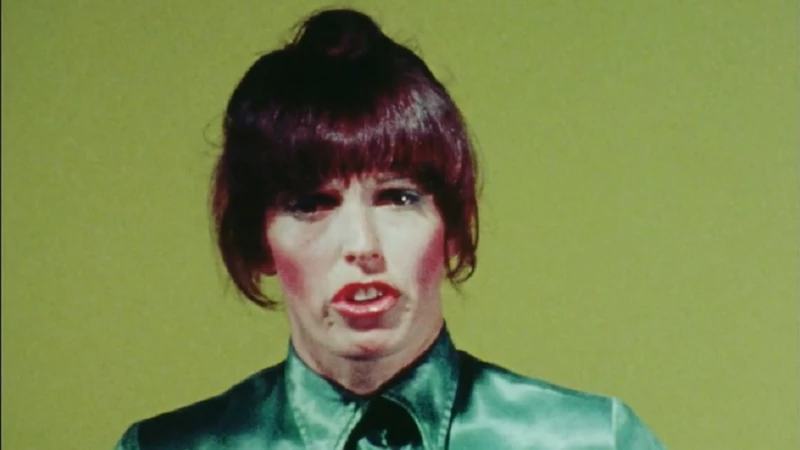
_________________
Last Chants for a Slow Dance (1977)
‘If Jon Jost’s direction was the stuff of genius, then Tom Blair’s performance as Tom Bates was the stuff of legend. He encapsulated the kind of brutal, honest naturalism that John Cassavetes spent decades trying to coax out of actors like Gena Rowlands and Peter Falk. Blair manages to change emotions from one extreme to another with a swiftness that would have seemed robotic or artificial from another, lesser actor. The fact that these violent mood swings are almost always captured in unbroken long takes gives him an almost sinister presence that spreads unease over the audience. We slowly become morbidly curious of just how far gone Tom Bates might really be.
‘Jon Jost’s Last Chants for a Slow Dance is a fascinating film which seems to stylistically predict the works of Béla Tarr and Jim Jarmusch. Without relying on the over-abused metaphor of the Death of the American Dream, suffice it to say that Jost’s film is a scathing rebuke of traditional American machismo and individualism. Tom Bates is no John Wayne, no Clint Eastwood, no Marlboro Man. He inhabits two wastelands: the plains of Montana and the killing fields of his inner psyche. Is it any wonder that the film ends in violence? Jost wisely realized that Tom Bates’ story could not end any other way.’ — Nathanael Hood
Trailer
the entire film
______________
Godard 1980 (1980)
‘The famous French film director Jean-Luc Godard is interviewed by British film theorist Peter Wollen and the editor of Framework Don Ranveaud. He talks of the developments in his work, the change in style epitomized by his most recent film, Sauve Qui Peut, his work with Francis Ford Coppola and the relations between his previous films and the new one. He also discusses his radical method of scriptwriting and the critical responses to his latest film.’ — Gul’monica
the entire film
_________________
Slow Moves (1983)
‘Fascinating, oddly gripping and often visually stunning. It’s not unlike a Peter Greenaway mystery translated to the dry dusty heartlands of Malick’s Badlands, although here the emphasis is on spiritual paralysis rather than Greenaway’s elegant intellectual conceits. Written backwards from its explosive end, the real Slow Moves doesn’t actually start until you’re leaving the cinema.’ — John Gill, Time Out, London
Trailer
Excerpt
the entire film
_______________
Rembrandt Laughing (1989)
‘This film is a portrait of the passage of one year in the lives of some San Francisco friends, circa 1988 (before the dot.coming of the city), a slow marijuana hazed story which drifts like the fabled fog, encompassing the quirks and habits of a generation that made the city theirs, if only for a while. Very obliquely Rembrandt Laughing sketches the time and place, encompassing the AIDS epidemic, the casual sexual revolution, the debris of ’68 lingering in the air. A quiet, very San Francisco comedy of life among a small group of friends. Rembrandt Laughing was improvised over the period of about a month by Jost and his friends, mostly acting non-professionals.’ — JJ
Trailer
__________________
Sure Fire (1990)
‘With David Lynch and Gus Van Sant, Jon Jost is one of the three great U.S. filmmakers currently working. This stunning film, about two interlocking families, marshals an array of avant-garde techniques to convey the inner turmoils of its characters. (More than any other American filmmaker, Jost refutes the idea that interiority is off-limits to cinema.) Yet, Jost also brings documentary realism to Sure Fire. It’s a visionary work that fashions a metaphor for American dismay and desolation out of what may seem initially an unhappy case far afield from our own (presumably) solid, secure lives.’ — Dennis Grunes
Excerpt
the entire film
_______________
All the Vermeers in New York (1990)
‘The woman pauses before a painting by Vermeer, and looks closely at it – she seems ready almost to disappear into it. The man observes her. He follows her from one room in the museum to another. Then back again. It is a quiet, subtle chase something like the long opening sequence of Brian De Palma’s Dressed to Kill, but this is not a thriller, it’s a strange, introspective cat-and-mouse game by Jon Jost, whose All the Vermeers in New York is the kind of film you have to think and think about, and then finally you realize you admire it. Jon Jost has been making films since 1974, at first with the anti-war collective Newsreel. I’ve seen only a few of his films, and thought of him as an “underground” filmmaker, if that word still has any meaning. But this film, beautifully photographed and acted with calm grace, is frankly aimed at the commercial theatrical market; in approach and subject matter, he falls somewhere between Woody Allen’s non-comedies and Eric Rohmer.’ — Roger Ebert
Trailer
Excerpt & interview with Jon Jost
________________
The Bed You Sleep In (1993)
‘Created by one of America’s most prominent independent filmmakers, THE BED YOU SLEEP IN is an unforgettable, beautifully structured and exquisitely photographed epic tragedy set in a small lumber town in Oregon. Ray (Tom Blair), a struggling lumber mill owner, and his wife Jean (Ellen McLaughlin) receive a letter from their daughter at college accusing Ray of shocking sexual abuses. As the family is torn apart by surfacing secrets and lies, the cataclysm echoes throughout the community and ultimately reveals the apocalyptic betrayal of America.’ — Fandor
Excerpt
Excerpt
____________
Frameup (1993)
‘Ricky, a dim-witted ex-con, meets Beth, a dim-witted waitress, in an Idaho diner. They take off in his car to Washington and begin an affair. Beth, a lonely romance-novel addict, is hopelessly enamored; Ricky is just in it for the (constant) sex. Beth’s longing to visit California and Ricky’s longing for quick cash leads them into a desperate situation. Director Jost uses a variety of avant-garde visual and narrative techniques, such as montage, collages, split screens and lengthy, tongue-in-cheek monologues to tell the tragicomic story of two complete losers in love.’ — Letterboxd
Two shots
the entire film
_______________
6 Easy Pieces (2000)
‘6 Easy Pieces is a compilation of shots and sequences made over the period 1996 – 1999, which seemed to find themselves draw together by a kind of gravitational attraction. The work is intended as a kind of sampler of the potential aesthetic range of DV and consumer-level NLE systems, though, of course, it is not merely a technical or aesthetic demonstration. It is also a commentary on contemporary arts, past history, creative energies, society, and, shall we say, a grab-bag of the author’s interests, from social observations to the usage of symmetry in religious architecture and music. The work was, more so than the two previous works done in DV, a deeper exploration into the shifts which digital media provoke – not only aesthetically, but, owing to the radically altered financial aspect, to the mode of working and thinking itself. I did not intend to make 6 Easy Pieces: not one shot was made with any intention of using it in a film or with an a priori idea. Rather they were made in process of experimenting with the medium, and it was only after they had been made, and were sitting in the back shelf of my mind that that found a connection and meaning for themselves. This mode of working and of approaching “work” has been for me invigorating creatively and, if you will, spiritually.’ — JJ
Trailer
_________________
Parable (2008)
‘Jon Jost’s films have always tended toward parable. Now this is the case again with Parable, the jewel of his Fuck Bush (He Fucked Us) Trilogy. (This overarching title is mine.) Homecoming (2004) homed in on the aftermath of a returning dead soldier; Over Here (2007), of a returning living soldier. Now Jost turns to the Bush-Cheney & Co. assault on individual rights and freedom, its devastation of these, and the linkage between this war at home, on the American citizenry, with the illusory nature of American hopes and promises predating Bush 43. Jost’s parable is a perfect one: crystal-clear, yet elusive, mysterious, irreducible, unfathomable. It was videographed in Lincoln in, as Jost puts it, “the Time of Bush.”’ — Dennis Grunes
Trailer
___________
Amtrak (2009)
‘In October 2008, Jon Jost is standing with his camera in the waiting area of a train station in the USA, filming the other travelers: a mother with a child, the cleaning service, businesspeople on the phone, the conductor who falls in love and says goodbye to his wife. Finally he gets on the train himself and points the camera out of the window at the passing towns, the landscape and the clouds in the evening sky. A benevolent look at America—in the middle of the global economic crisis.’ — zen xiu

__________________
Coming to Terms (2013)
‘In 2013, Jon Jost had been active for 50 years as a filmmaker. This led him to wonder whether there had been any point in it all, and Coming to Terms is the indirect answer to that question. An old man (filmmaker James Benning) calls his broken family back together: his two sons with whom he hasn’t spoken for years, as he was unable to accept their choices in life, and their two mothers. While the sons and mothers wonder why they have been called together, the father prepares for their arrival. Jost throws off traditional narrative conventions in order to penetrate to the emotional core of this meditation on death. The conversations between the family members, reproduced in unusual digital compositions, are juxtaposed with tranquil, deserted shots of houses and streets in an undefined American city. It gives the film a grand allure and ensures that the story is implicitly about the greater American family.’ — Rotterdam Film Festival
Trailer
______________
Bowman Lake (2014)
‘Bowman Lake is a single image film of Bowman Lake, sunrise to sunset.’ — letterboxd
Trailer
_____________
Pequenos Milagres (2019)
‘A devastating personal video essay that looks back on three years in Jost’s life when he began experimenting with digital video (I’ve never related more to his statement that when he first picked up a DV camera he very immediately moved on from celluloid film permanently) and more importantly the three years he spent raising his daughter Clara who was kidnapped from him by her mother. Much of the footage is in Portugal and Italy, with glimpses of London, Scotland, and Japan. There’s a great deal of narration this time around that adds a lot of emotion to these images from the past that Jost is featuring in a film released decades after much of this was taken.
‘There’s not a whole lot for me to expand upon as much of Jost’s aesthetic that was utilized in some of the other electronic works I’ve seen and reviewed is applied here. It’s really a depiction of the feelings and emotions behind loss and grief making this likely the most emotional of his films I’ve seen. It’s highlighted by the long unbroken takes of him fathering his daughter and the sweetness of much of what’s seen in a great deal of the film of course heightened by his electronic collage-like style. My favorite image is a selection of videos of Clara as a baby in various places and poses displayed over a gray digitized image that resembles rumbling water. It’s an exemplar of the great job Jost does of mixing and resynthesizing home movies to a poetic effect. It ends with two scenes, a direct address to the camera from him in the present day that bluntly states how he’s been unable to see his daughter as she’s been kept from him by her mother for almost two decades, and footage of him holding her right after her birth. It’s one of the more honest and personal attempts to reckon with grief I’ve seen in movie form, that really speaks for itself, and I’ll be thinking about it for a long time.’ — Daniel Moore
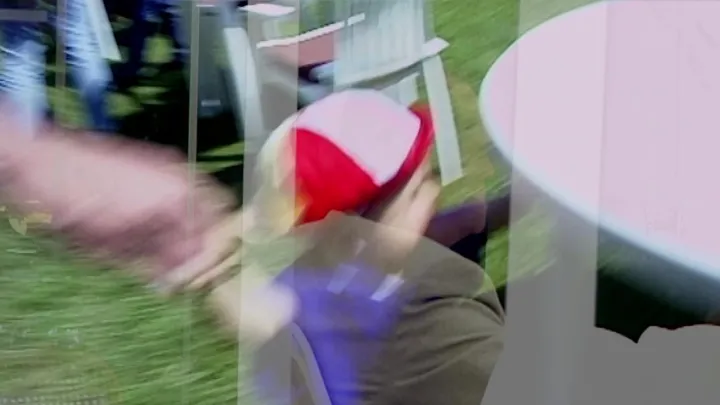
_____________
Up on the Mountain (2021)
Directed & sung by Jon Jost
the entire film
_____________
I AM NOT THE RIVER JHELUM (2024)
‘A mixed drama/documentary essay film set in Kashmir, poetically evoking the realities facing people in the midst of the political crisis with Delhi.’ — IMDb
Trailer
*
p.s. Hey. ** jay, Gosh, very happy to have had an impact on what you shelve. Curious structure in that yaoi game. Very head scratching/inspiring and likeable. Happy weekend. I hope it matters. ** Misanthrope, Don’t we almost all, man. I’m curious about the Minecraft movie or rather interested to fill in the big, surrounding phenomenon’s blank with knowledge of the thing itself, but it’ll take me a long plane flight for sure to solve that mystery. David needs a dominatrix. ** _Black_Acrylic, Hi, B. Pynchon of course was the other author the cool dudes carried around in book form in my high school days. And Vonnegut. Sort out that tonearm. Surely, there’s a way. ** Steeqhen, The Lynch sounds too content-heavy for me, I think. Needing to pee every 20 minutes is probably worth it? Luck in triplicate. ** James Bennett, My main association with colored text is concrete poetry’s aspiration to be both poetry and graphic design simultaneously. I like Faulkner, I think he’s great, of course, but I haven’t read him in ages, and he’s never been a foundational writer for me, but that’s only the fault of my particular talent and skewed writerly goals. You big into him? I’ll see if ‘TotH’ is seeable. Today I’m going to see the new Albert Serra film, an apparently very unusual documentary about bullfighting called ‘Afternoons of Solitude’. We’ll see. And hanging out with a visiting friend, the excellent fiction writer Maryse Meier. And ideally getting feedback from Zac on my latest draft of the script of our next film. And so on. I never fully know what Spanish food means. I know it’s not Mexican food. I think I assume Spanish food is pretty meat-centric so I have avoided it. But perhaps I’m wrong? Anyway, free food! Find your inner squirrel. ** Dominik, Hi!!! Hm, interesting, yeah, ridding oneself of a thing that has a face does seem hard. Humans can be so sweet. Favorite Pop Tarts, whoa. Okay, let’s see, I would say, hm, … Frosted Brown Sugar Cinnamon, Frosted Confetti Cupcake, and Unfrosted Blueberry. You ever eat those things? My weekend I just sort of tried to describe to James B just above us. Your weekend sounds very cozy and nice, awww. See you back here come Monday. Your love’s mood of yesterday was relatable even though my hoity-toity side tells me, ‘No, you’re not’. Love deciding the British 1 pound coin is the greatest coin in the world aesthetically speaking, G. ** Poecilia, Hi. Oh, thank you for asking, but I fear it’s too long ago and my process was super complicated and I would have to refer back to my notes and graphs which are far away in the NYU Library. I can tell you that the sigil sort of worked in a weird way. I don’t have any real life superstitions that I believe in as far as I know. So I guess the occult is just a resource for my art making, yeah. But I guess believing in ‘true love’ is kind of a superstition, isn’t it? I don’t know. I’m assuming you have real personal occult beliefs? Care to say what and how? I’m curious. ** Jules, Hi, Jules. Wow, that’s hilarious that your dad is the living embodiment of my memory and possibly someone I could have been buds with back when if he was a little older. What’s this theater show you’re putting up? You’re also a writer of novels and a choreographer? That’s amazing. I would guess NYC is an ideal place for you, no? Where were you before then? That’s funny, someone just wrote to me about that ‘Sluts’ discussion at KGB. They wanted me to come to it, but I’m in Paris, so I can’t obviously, but that’s awfully good of them and you to talk about my tome. Yes, things proceed with Room Temperature’ ,or we’re working hard to give it a good life, including trying to figure where and when to show it in NYC, so I’ll let you know. Thanks! It’s a true pleasure to start to get know you and yours. Fine weekend! ** Carsten, I’ll probably be here in late August but probably very sweaty. We shot the film in Yucca Valley, or, more specifically, in Flamingo Heights, which is a little section of Yucca Valley. Near Joshua Tree. I am still smoking, yes, and I have no plans to stop doing so, knock on wood. I would love a guest day on ethnopoetics if you feel like doing that, of course! Thank you for wanting to. Have a happy weekend or as close to happy as the current world can allow. ** scunnard, Right, good, it starts! Everyone, scunnard, who is better known to the world at large as the superb writer/artist Jared Pappas-Kelley, is co-founding a very worthy project in Canterbury, Kent, UK and hoping for some funding support, whether little or big, and I want to urge you to support him/it if you can. Here’s a short description of the project: ‘Pup and Tiger is more than just a café, it’s a dream brought to life by two passionate creators, Jared Pappas-Kelley and Ash Sweeney. As proud members of the LGBTQ+ community, we’ve always envisioned creating a space that not only exhibits exciting contemporary art and serves incredible coffee but also serves a larger purpose: bringing people together. Our mission is to foster a community where connection, creativity, and inclusivity can thrive.’ Go here to learn more and help. Please do. Great, man. I’ll support as best I can asap. Paris is good, Paris is Paris. ** catachrestic, Hey Yeah, Barth worked with the classics in his fiction a lot. That’s a distinguishing property of much of his work. No, I’m borderline sure those screenplays are best yellowing in a file folder. No, I’m not familiar, or just very superficially maybe. Yeah, but, dramatically purple prose is not really something I’m drawn to, truth be told. As much as I owe Sade, I always skim him. Unless Firbank’s purple counts. Tocqueville’s castle has an allure. Ah, and it’s near Cherbourg where we shot ‘PGL’. Wait, we might even have shot one of the scenes on that castle’s grounds. Huh, I’ll ask Zac. We did shoot the last scenes in the outer reaches of some giant estate. Looks familiar. Apropos of almost nothing, I went to PCC at the same time as David Lee Roth, and he was kind of the campus joke flouncing around in his scarves and shiny pants and dramatically exposed chest, but then Van Halen got famous, and we all had to eat crow. I can’t tell you the intent of the sigil because that would kill the sigil’s supposed power to enact itself. ** Steve, The Christian Death song is called ‘Dogs’. Hope you felt better by yesterday eve. Okay, I’ll check out the second album, although Thomas plus Henry Cow is a pretty intriguing idea too. ** Thomas H., Hey. I only read at home. On trains too sometimes. But not on the metro. I like to study people too much. I thought it was cool that Christian Death stole my poem. The song is … not really my thing, but I guess it does its job. Monday is your elections? That’s scary. I trust and hope that the seemingly most acceptable of the bunch wins. ** HaRpEr, You know that book, cool! Have you read ‘Chimera’? I remember thinking that was his most fucked up and therefore possibly most interesting novel. I sort of vaguely remember a point when it seemed like lots of people were carrying around copies of ‘A Little Life’, but I personally don’t think that made them seem cool. No, it’s very hard to imagine a ‘Gravity’s Rainbow’ being published by a major press. Franzen is not remotely an equivalent. It wasn’t that long ago when William Vollman was getting giant, complicated novels published by major houses, but even that seems far away. Congrats on getting the assigned poem finished in time. I can’t imagine doing that. I did used to write journalism on tight schedules, but that seems different somehow. ** Nicholas., I can’t tell yet about the deep dish pizza. The online photos aren’t very helpful. I assume it’s an attempted replication of Chicago style, but the French aren’t great at replicating foreign cuisines. You should try eating what they call muffins. I avoid my birthday as much as possible, so I am the last person to offer recommendations unless you want to ignore it. 27, good age. You have so many years left. Everyone. Nicholas. has launched a most interesting project called Closed Practice that now has a thorough online presence that will help you understand the project and even proceed apace therein perhaps. Go here to begin your immersion. The sigil has kind of worked but not in the way I had anticipated. ** Corey, Hi! I think contracting and focusing is a good idea, speaking for myself. I mean I do all kinds of things but only one at a time for the most part. ** Right. I’ve restored an old Day about the great and greatly undervalued American filmmaker Jon Jost for you this weekend. Perhaps you know his films or one or two of them? Or not? His film ‘Sure Fire’ is in my all-time favorite films list. Anyway, I recommend that you use this occasion to get some knowledge and even experience of his work under your belts. See you on Monday.




 Now available in North America
Now available in North America 
Wow, Jon Jost! I know a guy who owns Sure Fire on DVD – he was in a bidding war for it on Ebay, lol. The stills posted here are stunning, definitely going to check out his work now! I know! My dad’s a cool dude. The show’s a bit of an odd one – it follows a teenage boy’s descent into the darkest corners of the internet spaces that died two or three decades ago. A lot of projection art, some choreography, and limited dialogue. I’m excited! Yes! I’m what they called a scatterbrained artist back in school, lol. NYC absolutely is, at least for now. I’m from Pennsylvania, and I lived in South Carolina for the past four years before moving up here, which was NOT the ideal place, but provided a lot of interesting aesthetics and people to observe… South Carolina is simultaneously one of the most beautiful and most disturbing places I’ve ever been to, kind of like Nevada. Aw, yeah! Haha, our operation over at KGB has grown quite a bit recently! I’ll let you know if anything interesting comes up. Yes, let me know! Glad that things are going well with Room Temperature and that it’s having a good life so far! Saw that you filmed it in Yucca Valley – what a strange and wonderful place for filming. Same goes for you! Have a wonderful weekend!
I’m writing a new song that I plan to release on May 2nd. (It’s the next Bandcamp Friday.) It interpolates the melody of the Velvet Underground’s “Sunday Morning,” but the arrangement sounds more like ANOTHER GREEN WORLD.
A LITTLE LIFE was very fashionable for a year or two, but the backlash has set in. There are dozens of YouTube videos attacking it.
I did make it out for COPKILLER yesterday. It was OK, especially the section where Harvey Keitel and John Lydon’s characters start acting like a married couple, but the direction is drab and Lydon’s performance shows why he never acted again. I want to see SINNERS tomorrow.
Yesterday, I read an article about William Vollmann’s recent work. Viking dropped him because he turned in too many extremely lengthy, uncommercial-sounding books. His latest one, a 4,000-page novel about the CIA, has found a new publisher.
Hope you’re having a great weekend!
Jost… a name I’d been familiar with & curious about for a while. Last Chants for a Slow Dance looks very intriguing. Gotta make time to watch that, now that it’s so easily accessible. The idea of the motiveless killer fascinates me on all sorts of levels. Especially in the deep old pagan sense, where you have gods who don’t kill to punish or vanquish evil, they just kill. Because it’s their nature. And to deny the sacredness of that god-force is to turn a blind eye to reality.
Just checked out Flamingo Heights on Google Maps. Looks like an area I must’ve skirted more than once. Certainly gorgeous terrain. Palm Springs, Desert Hot Springs, Joshua Tree etc. were the go-to place of refuge for me & the ex-wife. There’s a road house out in Desert Hot Springs that I think of often for some reason.
That whole southwestern desert is very prominent in my heart & my poems. It’s where my best friend died after turning his back on civilization. Natural causes, details unknown (because his family didn’t bother to ask). He was a lot older than me, but I still wished he could’ve gotten a few more peaceful years out of his Mojave sanctuary.
The day on ethnopoetics will be a pleasure to put together. I forget the formatting requirements for your blog. When it comes to embedding images & video, what platform should I use?
Hey Dennis! I just watched an amazing movie called “Demonlover”, which was about a woman investigating a weird porn site. It has a few scenes where snuff pornography is rotoscoped (kind of, it’s hard to explain) by 3-D animated pornography. That was such a striking image I’ve been trying to type out something in response to it, but failing. There’s just something in there about real human suffering being overwritten by synthetic, idealised imagery I find really scary/erotic/funny. The rest of the movie was cool too, but I was so taken by that section that I didn’t pay as much attention to the rest of it.
Yeah, isn’t that structure in the videogame cool? It’s even more interesting in the main routes – as with most games like this, it composes of an overarching narrative that’s overridden by romance with one of a few characters that involves them revealing some deep truth about themself (trauma, motivation, et cetera), followed by a pornographic scene or two. This game has a much stranger structure, where the initial routes are exactly like that, but it seems to have gone in a new direction. The current route I’m in is totally asexual, and doesn’t seem to have a clear romantic focus. If it wasn’t basically a novel in game-form, I’d assume there was some way I needed to break from the structure (like Mario leaving a level via a secret pipe, or something) but there seemingly isn’t. Anyway, it’s a form of writing I’ve never come across before, and it’s really shaping up to be something interesting to me – so, if anyone has any visual novel recommendations (famous, niche, self-published, whatever), I’d love to hear them. Anyway, have a great weekend, see you!
Hey Dennis,
Had a strange day today, exam went well (can’t remember if I said). Ended up sleeping through the end of Friday and in-out of sleep today. Probably not the best use of time, but maybe I can make up for it tomorrow. Despite feeling like I’m done, I’m definitely not
I was familiar with chaotic sigils before reading Guide because I made one to reunite with the woman who got me to realize that I was queer. I would say the sigil didn’t work, or that by now I hope it’s not suddenly gonna.
I still bring up gods or synchronicity and the Universe as figures of speech, and out of politeness I won’t squirm or get snarky if somebody tries to oil me before we go in to observe a Catholic demon-exorcism even if that wasn’t how I planned to spend my Thursday. If I’m ever in Paris again then sure I’ll drop a votive pebble to Sequana if only to say hi (or pray hi, I should say.)
My approach to writing fiction does allow for some ambiguously uncanny dimension like with paracosms or how disobediently some of the characters behave in my imagination sometimes, but I’m not much for the reality-shifters, fictive systems or kinnies subcultures that track with that even if I think I sorta kinda maybe sometimes get where it comes from? Whether the writing that results is even any good, that’s a very different matter anyway.
Of all the things to believe in that can’t be substantiated or proven, true love sounds like one of the more benign options.
*Poof* Wow thanks for the boost & I really enjoy the font difference when you boost our stuff to the collective here seems like not shouting but proper vocal projection in type form sorta wild. And I’ll say good pictures of pizza can be misleading I think the raunchyer the pizza pic the more likely it’ll be good possibly. Like if it looked French from the jump that might inspire fear. Thats amazing for sigil science/ practice I theorize the nature of a book may have infused your intention with a living structure as writing lives on the page per say so its likely still playing out let me know when it all works out. And god what a genius way to charge a sigil every copy printed let alone sold AND then in the hands of a person AND further charged by being apart a cycle ect. its mass energy amalgamation 101. wow you tackled the metaphysical and physical in one go and you’ve just added a new layer to closed practice thank you! im gonna depart on that breakthrough and brb ttylxoxo.
oh wait I lied thanks for saying I have so much time left I often dread im too late but its actually feeling like im just arriving and oddly enough on time…
I assume my b**** *** will be a sort of anointing if im lucky or wish hard enough.
*Poof*
Hi Dennis!
Thank you for the spotlight on another artist whose work I’ve only ever heard of in passing. Will try and track down one or two of these films!
Today, as I mentioned earlier this week, was Canadian Independent Bookstore Day, and I had the great pleasure of visiting a number of Vancouver bookshops with a couple of friends! My haul includes two zines and five books:
‘Pursuit of PLAYsure: Outside the NORMie’ – a zine by Mx. Vee Chorabik
‘Dog Saint: a hagiography of Saint Guinefort’ – a zine by Maggie D. Waldron
‘Apocalypse Child: Surviving Doomsday and the Search for Identity at the End of the World – A Memoir’ by Carly Butler*
‘Hoka!’ by Poul Anderson and Gordon R. Dickson
‘CloudCry’ by Sydney J. van Scyoc
‘The Mountain In The Sea’ by Ray Nayler
‘Searching for Serafim: The Life and Legacy of Serafim “Joe” Fortes’, by Ruby Smith Díaz*
*authors who sold me their books directly at tables set up in local indie bookshop Cross & Crows!
On top of that, we enjoyed the sunshine, had okay burgers and nice ice cream.
I hope your weekend is even a fraction as pleasant!
Hi Dennis, thanks for the shout out. Now I’m at that awkward stage of hoping people hype and get behind… feels a bit like awkward kid sending out invites for his birthday party and hoping people show? We just hit £500 last night so that’s a good start and thanks for your help. I’m not always a big going out person sometimes, but went to a queer event here in town and everyone was very supportive and encouraging so felt nice.
Jon Jost is a new name for me but I’ll be bookmarking his details for a time when I’m not otherwise engaged with the Pynchon business.
No details yet from Nick but I presume that he would have finished the London Marathon by now. Soon as I get a time then I’ll let you know.
I had a fairly rough “weekend” and am behind on my homework, so unfortunately I wasn’t able to properly engage with this day in time. Nonetheless, I’ve set a definite intention to correct my ignorance of Jon Jost’s work, and I’m going to start with “Sure Fire,” as soon as I have a chance, most likely Tuesday or Wednesday. Broadly, it really amazes me how the US manages to have so many billionaires and yet none of them seem to have any serious interest in funding the arts, or much taste and commitment to stuff that isn’t likely to be commercially successful if they do. For instance, it kills me that David Lynch’s last feature film was all the way back in 2006, plus he had plans for another big TV series after the Twin Peaks reboot, but wasn’t able to get the funding. Jon Jost seems like another glaring instance where it’s like, can’t any of these rich fucks can do something? The last time I had a chart reading with Ariana Reines, she told me my planets and stars suggested billionaire potential, so hopefully that happens soon and I can counterbalance all the vapid tech bros with their yachts and rocketships.
Re: Michelet, I get that I’m not making it sound very appealing, but the thing is that it works, somehow. I had to move on from French Revolution stuff to prepare for and teach my course on Das Kapital, but high on my list of aspirations is to someday have the time to really dig into his and Carlyle’s works on the topic, which present an interesting stylistic contrast in addition to their famously divergent perspectives on the revolution being fundamentally creative or destructive, respectively. I will also have to look into Ronald Firbank soon.
That’s hilarious about David Lee Roth, and I’m amused to learn (or maybe re-learn) that you mostly skim de Sade. It’s hard not to, to be sure, and often the most interesting things, formally speaking, don’t seem to have been intentional. I know you’re a big fan of how 120 Days of Sodom breaks down into fragments towards the end, and I found there was something weirdly monumental about the brutal start-stop rhythm of Juliette as it altered between depraved sex and philosophical digressions.
It looks like there are a lot of chateaux near Cherbourg, so I won’t get my hopes up too much that I’ll see Tocqueville’s when I stream “PGL” in the very near future, but it’s an interesting thought.
Hey! No, I haven’t read ‘Chimera’! I’ve heard about it being one of Barth’s more unpredictable books. I’m interested that you say it’s his most fucked up, is that because of the subject matter or the style or what? Should read that. I actually really want to read ‘Letters’ but I’m going to make myself read a couple of his other books first.
I’ve never read Vollmann. American postmodernism isn’t really my main forte but since I’m such a big fan of Pynchon and Gaddis I have read at least one from most of the major writers. I do really want to read ‘The Rainbow Stories’, and his ‘Prostitution Trilogy’ looks interesting, but his ‘Seven Dreams’ series doesn’t really look like my thing. But I’ll try anything of course.
Yeah, I’ve said before, but I’m really not a fan of Franzen. It’s like he read the aforementioned writers and learnt the most generic, surface level things those books had to offer so that he might as well have read, well… any American family drama and have gotten what he needed. His essay about Gaddis is so fucking pretentious, he hardly even likes Gaddis for Christ’s sake and calls him ‘Mr. Difficult’. Writers like Franzen are edging, they never come. They have some sort of ambition but for them ambition is about writing something that’s long rather than something that’s interesting. And something that’s about America.
Anyway, I’ll cool off on Jon for a while. I’m reading ‘Three Hundred Million’ by Blake Butler at the moment, it’s really mind altering. Amazing sentences. Partly colloquial, partly esoteric, partly scientific.
I was going to see the Leigh Bowery exhibition at the TATE this weekend but I was really busy with assignments so I’ll have to go another day. People I know have told me that they have ‘Kurious Oranj’ and an interview with Mark E. and Brix playing on a loop, and that it’s a really massive exhibition that one could spend a whole day wandering through, so I’ll have to visit asap so that I can fit in time to go twice or thrice if I want to.
Uhhh. Another fucking anti trans bullshit thing today in the UK. Trans people aren’t allowed to use the bathroom they identify as anymore. I seriously want to emigrate somewhere.
Nice post, Dennis.
I’ve been filming a documentary about Jon for the past couple years. He’s such a great guy in addition to him being a great artist